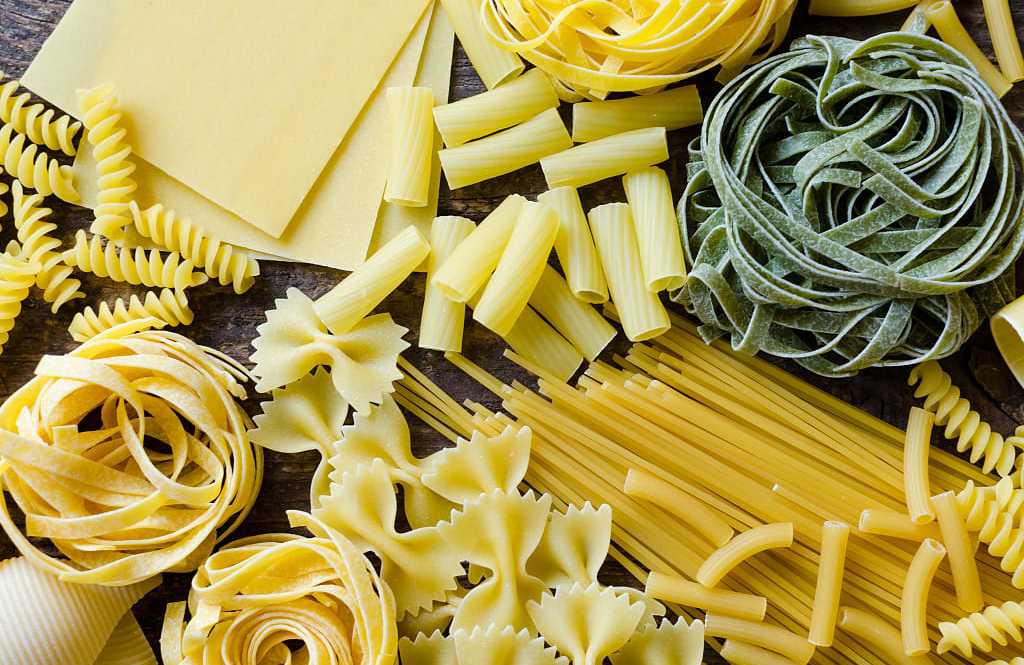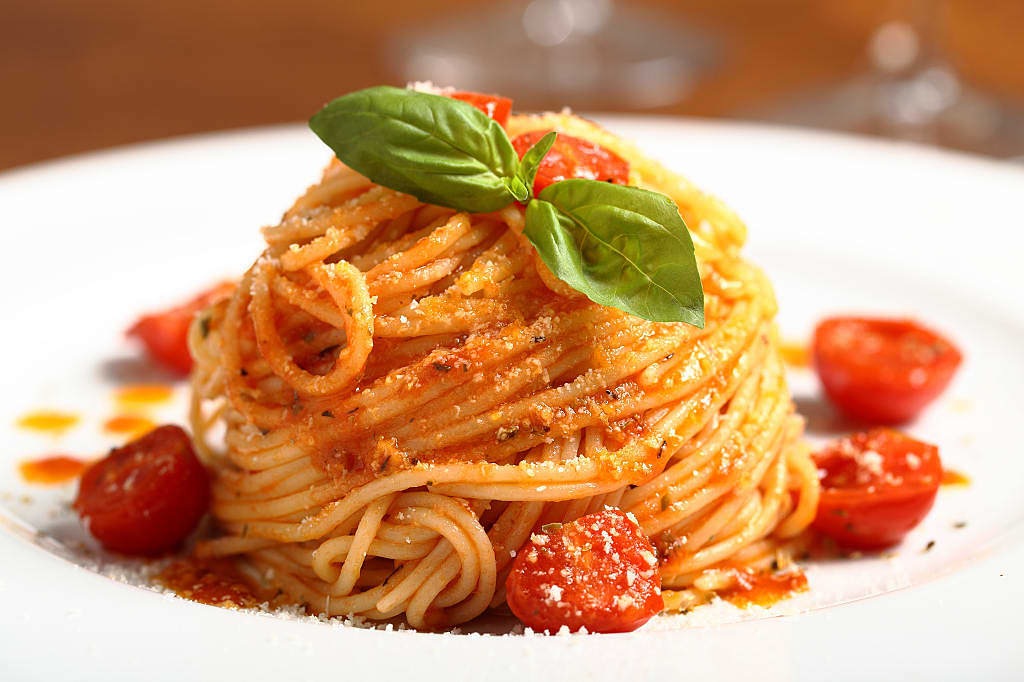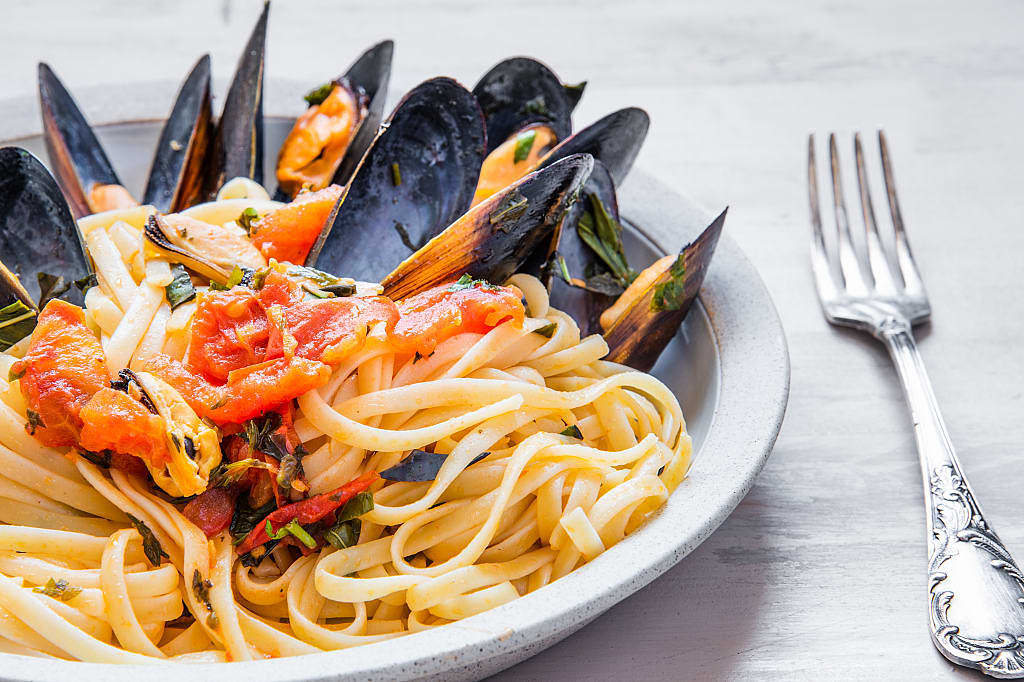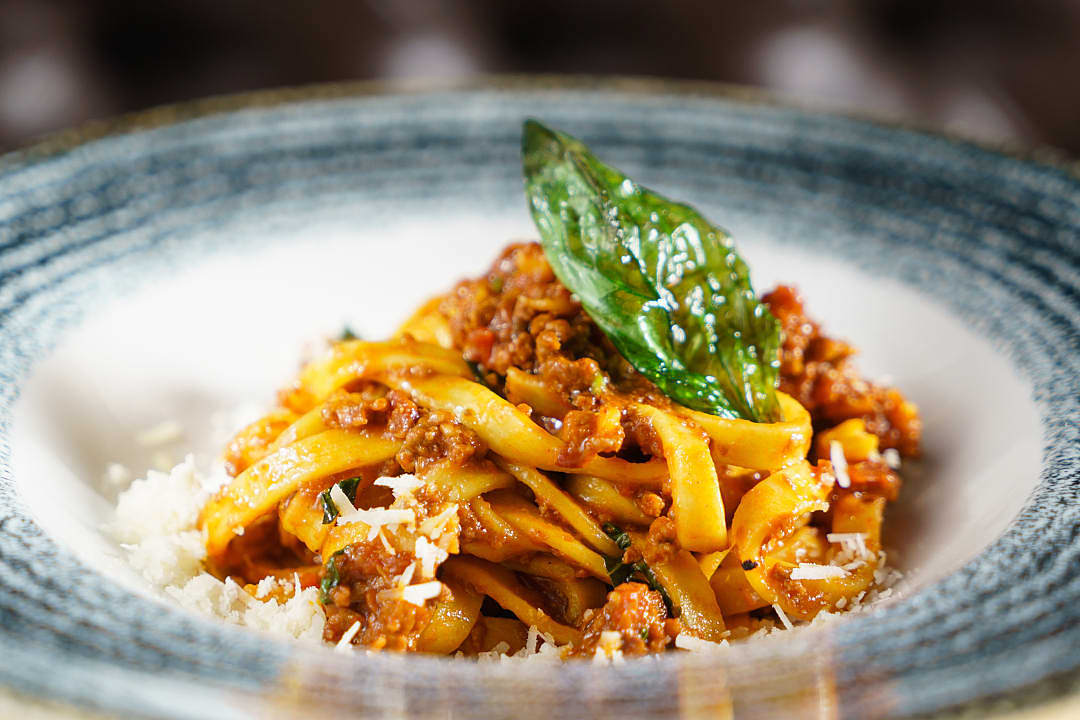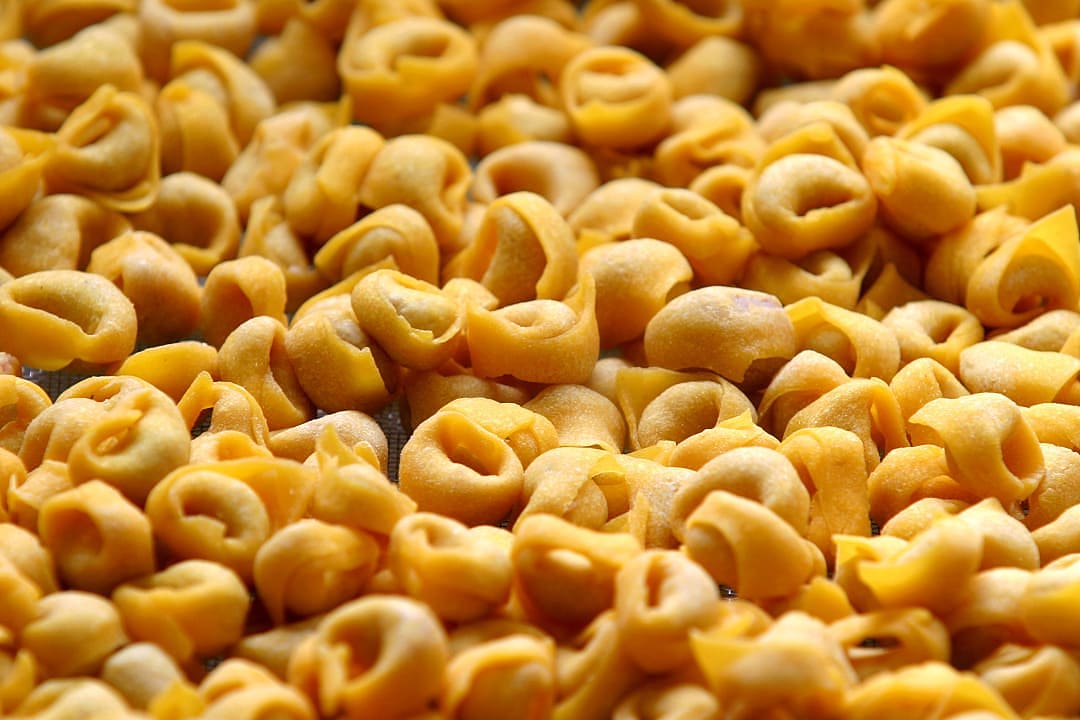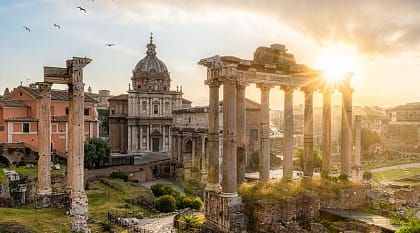Italy's pasta repertoire extends far beyond the most globally recognized shapes, offering a fascinating journey into regional specialties and culinary traditions. Each tells a story reflecting local ingredients, historical influences, and specific ways of serving that enhance its distinct texture and flavor. Exploring these lesser-known, yet equally delicious, varieties is an adventure for any discerning palate.
Farfalle / Bow Ties • Emilia-Romagna and LombardyWatch as whimsical bow-ties of pasta dance in your bowl, their pinched centers and delicate wings capturing light sauces and tiny vegetables with playful elegance. In Emilia-Romagna and Lombardy, farfalle bring a touch of joy to the table, turning a simple meal into a visual and culinary delight.
- Whimsical Shape: Famous bow-tie shaped noodles, created by pinching the center of a rectangular dough.
- Regional Preparations: In Emilia-Romagna, often served in chicken broth or with liver ragù. In Lombardy, often vibrant with colors from beets, spinach, or squid ink.
Fusilli • Abruzzo, Molise, Lazio, PugliaTrace the elegant spiral of a fusilli noodle with your fork, a perfect corkscrew shape designed by generations of Southern Italian pasta makers to trap and hold onto sauce. Whether dressed simply with tomato and basil or catching the hearty chunks of a Sunday ragù, its twists and turns promise a flavorful bite every time.
- Corkscrew Delight: Long, thick noodles with a distinctive corkscrew shape, originally from Southern Italy.
- Traditional Servings: Typically served with simple tomato sauce and cheese as a primo course.
- Regional Names: Also known as code di topo or "mouse tail".
- Family and Holiday Meals: Handmade versions are often enjoyed on Sundays or holidays with meat or sausage ragù in the south.
Gemelli • CampaniaMarvel at the clever twist of gemelli, which appears as two strands of pasta entwined, but is actually a single piece folded back on itself. This “twin” shape creates a firm, chewy bite and a multitude of nooks and crannies, making it the perfect partner for simple, elegant sauces that cling to its unique form. Tuck into it on Zicasso’s Italy food and wine tours.
- "Twins" Twist: Distinctive twisted tube resembling a double helix, though it's a single S-shaped strand twisted upon itself.
- Sauce Affinity: Its unique shape and firm texture hold refined, simple sauces made with tomatoes, finely diced vegetables, or dairy/oil-based sauces.
Chiocciole • Various RegionsDelight in the charming, snail-like curl of chiocciole, a pasta whose deep ridges and hollow center make it a perfect vessel for flavor. Scoop up a spoonful from a hearty minestrone or a creamy cheese sauce and discover how this whimsical shape turns every mouthful into a satisfying, sauce-laden bite.
- Snail-Shaped Tubes: Small, tubular noodle with a curvaceous, snail-like shape.
- Versatile Pairings: Used in soups or with light to heavy sauces, often ridged to capture more flavor.
Bucatini • Campania, Liguria, LazioExperience the unique sensation of bucatini, a thick, spaghetti-like pasta with a surprising secret: a tiny hole running through its center. This clever design not only provides a delightful chew, but also channels sauce from the inside out, ensuring every strand is bursting with flavor, especially when paired with rich Roman classics like Amatriciana.
- Hollow Spaghetti: Long, thicker spaghetti-like noodle with a hole running through its center.
- Sauce Absorption: Its hollow nature allows it to perfectly capture most sauces.
- Flavorful Combinations: Often served with savory ingredients like anchovies, sardines, pancetta, guanciale, cheese, and eggs.
Cappelletti • Emilia-RomagnaSavor the delicate, hat-shaped parcels of cappelletti, tiny dumplings traditionally filled with savory meats or rich cheeses from their home in Emilia-Romagna. Often served floating in a clear, flavorful broth, each “little hat” is a warm, comforting bite that speaks of tradition and careful craftsmanship.
- "Little Hats" Dumplings: Unique, rounded, dumpling-shaped pasta, often stuffed with cheeses like Parmigiano Reggiano and grana padano or meat.
- Modena Origins: Originated in Modena, commonly served at lunch or dinner.
Bigoli • VenetoEnjoy a plate of bigoli, a thick, rustic pasta from the Veneto region whose coarse texture, often derived from whole wheat or buckwheat flour, is born to be paired with the most robust of sauces. Its substantial form is the traditional partner for a rich duck ragù, a hearty dish that embodies the soulful, earthy flavors of Northern Italy.
- Venetian Thick Tube: Long, thick, tubular pasta from the Venetian province.
- Hearty Pairings: Typically made from buckwheat or whole-wheat flour and served with hearty meat sauces, famously with duck ragù.
- Specific Usage: Always a primo course before a meat dish, but never with seafood.
Rotelle • Northern ItalyBring a sense of fun to your meal with rotelle, playful “little wheels” of pasta whose spokes are brilliant at catching chunky vegetable or meat sauces. A favorite in Northern Italy, especially in pasta salads and soups, this shape proves that sometimes, you should play with your food. To discover more about the region, take a look at our Northern Italy Travel Guide.
- "Little Wheels": Circular noodles with spokes resembling wheels.
- Sauce and Dish Versatility: Popular in northern Italy with tomato- or cream-based sauces, soups, hearty meat sauces, and pasta salads.
Orecchiette • Puglia and BasilicataDiscover the signature pasta of Puglia in orecchiette, or “little ears,” each one lovingly indented by a thumb to create a unique shape that is slightly thicker around the rim and tender in the center. This clever design is perfect for scooping up rustic sauces, famously paired with bitter greens like rapini and savory sausage for a true taste of Southern Italy.
- "Little Ears": Renowned ear-shaped pasta from Southern Italy.
- Classic Pairings: Often paired with rapini, broccoli, or a sauce made with tomato, meat, and ricotta cheese.
- Texture: Made with semolina dough, often dried for a thicker, heartier center.
Orzo / Risoni • Various RegionsDon't be fooled by its rice-like appearance; orzo is a tiny yet versatile pasta shape that adds a delightful, chewy texture to soups, salads, and pilafs. Whether warming a minestrone or forming the base of a bright, Mediterranean-inspired salad, orzo is a small but mighty staple in Italian kitchens.
- "Big Rice": Resembles grains of rice, but is made from durum semolina flour.
- Versatile Use: Commonly used in soups (like minestrone), pasta salads, and side dishes.
Capellini / Angel Hair • Various RegionsHandle with care the delicate, ethereal strands of capellini, a pasta so fine it's named “angel hair.” Because it cooks in a flash, it's the perfect partner for the lightest of sauces, a simple toss with fresh tomatoes and basil, a delicate seafood broth, or just butter and Parmesan, allowing its fragile beauty to take center stage.
- Delicate Strands: Extremely thin pasta resembling strings, similar to spaghetti but much finer.
- Ideal Pairings: Best for soups, seafood dishes, and light sauces due to its delicate texture.
- Packaging: Often sold in coils resembling a bird’s nest to protect its fragility.
Agnolotti • PiedmontIndulge in the refined elegance of agnolotti from Piedmont, small pasta parcels typically folded over a savory meat or vegetable filling. Often served in their purest form, tossed in a simple sauce of melted butter and fresh sage, they are a perfect expression of the region's sophisticated, earthy flavors, sometimes made even more luxurious with a shaving of white truffle.
- Stuffed Squares: Square-shaped pasta from Piedmont, often stuffed with meat or vegetables.
- Flavor Profile: Inspired by the flavors of Piedmontese forests, Alps, and Apennines mountains.
- Serving Style: Occasionally poached in broth, but commonly pan-fried with sage and butter sauce, often topped with shaved white truffle.
- Unique Regional Specialty: In Monferrato (Piedmont), a special agnolotti stuffed with donkey meat is a memorable local custom.
Rigatoni • Lazio and SicilyEmbrace the bold, hearty nature of rigatoni, a large, tubular pasta whose deep ridges are a magnet for robust sauces and melted cheese. A favorite in Rome and Sicily, its wide-open shape is perfect for catching every bit of a chunky meat ragù or a classic alla Norma, making for a truly satisfying and substantial meal.
- Ridged Tubes: Large tubular noodle with distinctive vertical ridges running lengthwise.
- Sauce Capacity: Larger than penne, capable of holding hearty sauces like meat ragù as well as lighter sauces.
- Regional Popularity: Originated in Lazio and is popular in Rome for dishes like La Pagliata. It’s also used in Sicily for dishes like Rigatoni alla Norma.
- Cheese Magnet: Ridges make it excellent for capturing melted or grated cheeses.
Rotini • Southern ItalyEnjoy the playful, tight corkscrew of rotini, a shape beloved in Southern Italy for its incredible ability to hold onto flavor. Every twist and turn is a trap for sauce, making it a perfect choice for everything from a creamy carbonara to a vibrant pesto or a simple tomato-based sauce.
- Tight Corkscrew: Similar to fusilli, but with a tighter turn and smaller rotation.
- Sauce Affinity: Natural twists are popular in southern Italy for capturing tomato-based sauces, pesto, or carbonara.
- Flour Types: Most often made from refined white wheat flour, but also available in whole-wheat or brown rice versions.
Acini di Pepe / Pastina • Lazio and CampaniaFind comfort in a spoonful of acini di pepe, tiny “peppercorns” of pasta that add substance and a delightful texture to soups and broths. A nostalgic staple in many Italian households, this “pastina” is the heart of the famous Italian wedding soup, turning a simple broth into a nourishing, heartwarming meal.
- Tiny Grains: Dry pasta resembling couscous or tiny grains, also called pastina or "tiny dough".
- Soup and Salad Star: Typically used in soups and salads, famously the main ingredient for Italian wedding soup.
Strozzapreti • Emilia-Romagna, Umbria, Marche, Tuscany, San MarinoAppreciate the rustic, hand-rolled charm of strozzapreti, an elongated, twisted pasta whose name cheekily translates to “priest stranglers.” Its uneven surface and open twists are perfect for clinging to rich meat or cream sauces, offering a satisfyingly chewy bite that speaks of its handmade origins in the heart of Italy.
- "Priest Stranglers": Shaped like a hotdog bun with elongated, light twists.
- Sauce Holders: Rounded design helps capture cream and meat sauces.
- Regional Dough Variations: Romagna version contains wheat flour, water, salt; Emilia version typically adds egg whites and Parmesan cheese.
Tortelli • Emilia-Romagna, Lombardy, TuscanyExplore the delicious diversity of tortelli, a family of stuffed pastas that, like their cousin ravioli, can be filled with anything from meat and cheese to sweet pumpkin. Whether served simply with melted butter and sage or topped with a hearty ragù, each region offers its own beloved version of this comforting and versatile dish.
- Stuffed and Ribbed: Closely related to ravioli with a square shape, ribbed edges, and fillings of meat, cheese, or mushrooms.
- Serving Styles: Often topped with hearty ragù sauce or melted butter.
- Shape Variety: Can have semi-circular or twisted, rounded shapes.
- Sweet and Savory: Can also describe a fried pastry with jam or cream. Try pumpkin tortelli or Parma tortelli, which contain ricotta, herbs, vegetables.
Tortellini • Emilia-RomagnaDelight in the iconic ring shape of tortellini, a pasta so beloved in its native Emilia-Romagna that it's affectionately nicknamed “belly button.” These small, delicate dumplings, traditionally stuffed with a savory mix of meat and cheese, are most famously served floating in a rich, clear broth, a dish that is both elegant and deeply comforting.
- "Belly Button" Rings: Rounded, ring-shaped pasta, typically stuffed with a mixture of meat such as pork loin, prosciutto, or cheese.
- Historic Roots: Origins can be traced back to Italy’s Emilia-Romagna region in the 16th century.
- Classic Serving: Made fresh with flour and eggs, and served in a beef or chicken broth.
Tortelloni • Emilia-RomagnaEnjoy the larger, more substantial cousin of tortellini, the tortelloni. These generously sized pasta rings are typically filled with creamy ricotta and leafy greens like spinach, making them a perfect canvas for rich butter or tomato-based sauces that complement their vegetarian filling.
- Larger Tortellini: Rounded, ring shape that is similar to tortellini but larger.
- Common Fillings: Typically stuffed with ricotta cheese and leafy greens (like spinach), or sometimes porcini mushrooms, walnuts, or meat mixtures.
- Sweet Variations: In Modena, try a unique version with pumpkin pulp and amaretti biscuits for a sweet twist.
Tortiglioni • Southern ItalyAdmire the elegant spiral ridges of tortiglioni, a tubular pasta whose design is a masterclass in sauce-holding architecture. A staple in Southern Italy, these grooves trap rich, full-bodied sauces, ensuring every single bite is as flavorful as the last. Take a look at our Southern Italy travel guide for more information on the region.
- Diagonal Ridge Tube: Small pasta with a tubular design decorated with diagonal ridges, similar to a smaller rigatoni.
- Sauce Trapping: Ridges add beauty and effectively capture rich, full-bodied sauces made from meat, tomatoes, vegetables, or cream.
- Dry Pasta Preference: More common in Southern Italian cuisine, which uses dry pasta more readily than in northern Italian cuisine.
Cellentani / Cavatappi • Southern Italy to RomeHave fun with the bouncy, corkscrew shape of cellentani, a hollow, spiral pasta that adds a playful texture to any dish. Its modern, versatile form is a fantastic match for creamy and tomato-based sauces, making it a go-to for creative pasta salads and hearty baked dishes.
- Hollow Spiral: Hollow, spiral-shaped pasta, approximately an inch in length.
- Surface: Can have grooves, ridges, or remain smooth.
- Versatile Pairings: Pairs well with tomato-based sauces, cheeses (provolone, mozzarella), and can be a great addition to a caprese pasta salad.
- Modern Use: Mostly machine-made, provides versatility for cream-based and tomato sauces in staple dishes, such as Cavatappi Amatriciana or Cavatappi Pomodoro.
Ziti • CampaniaCelebrate with ziti, a smooth, medium-sized tube pasta whose name, meaning “fiancés,” hints at its traditional place on wedding feast tables. A staple in Southern Italy, its sturdy shape makes it the star of hearty baked casseroles, where it layers beautifully with cheese and rich Neapolitan sauces.
- "Fiancés" Tube: Traditional Italian Ziti noodles have a tubular design with a smooth texture.
- Cultural Significance: The word ziti means “fiancés,” referring to the pasta’s traditional use during Italian weddings and its easy function in casseroles.
- Shape Distinction: Similar in shape and size to penne, but has straight edges, while penne has diagonal edges.
Neapolitan Staple: Embrace the traditional flavors of ziti at restaurants dotting the southern Italian region of Campania and tuck in to a quintessential Neapolitan pasta.
